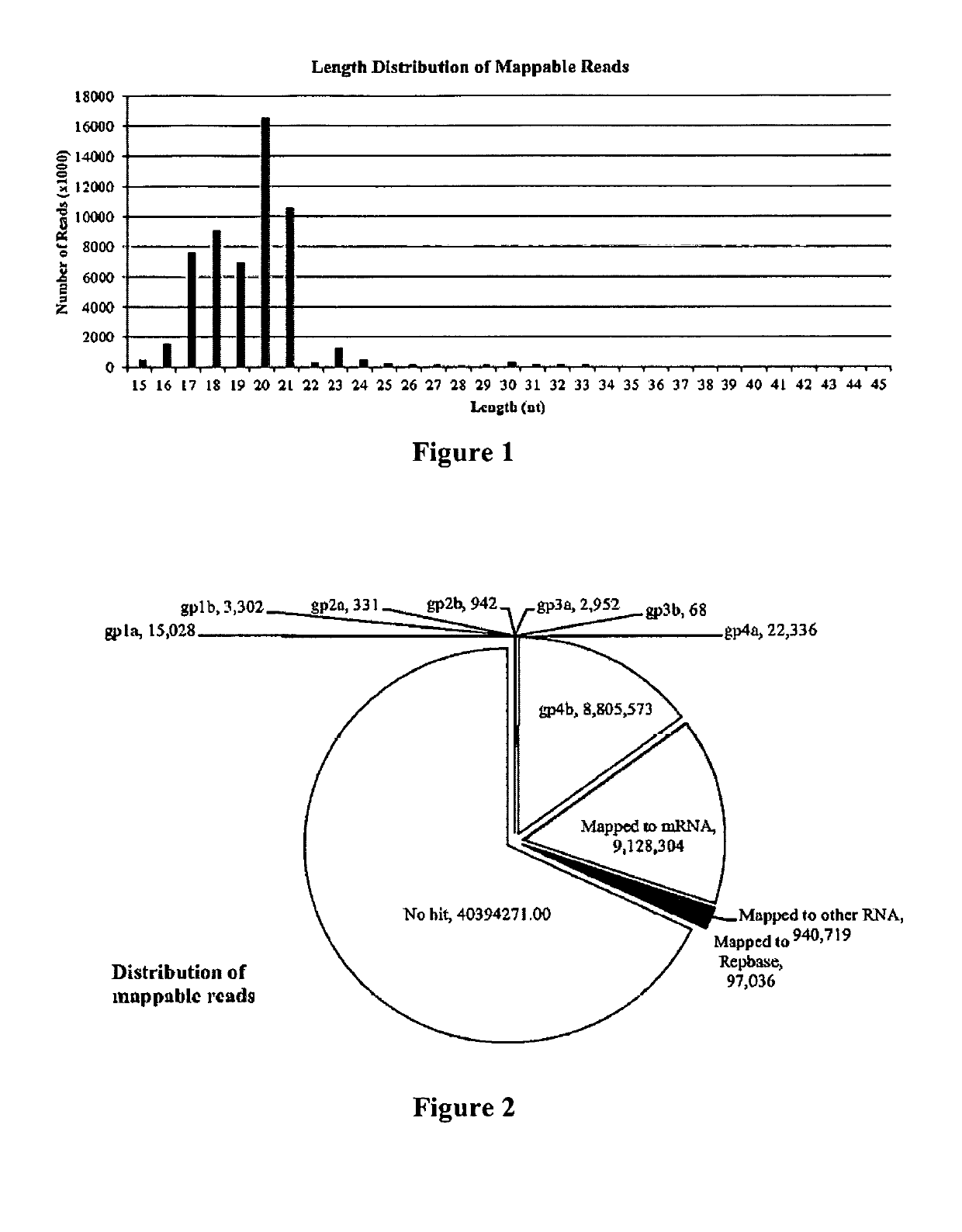Non-invasive assays for embryo quality
a technology of embryo quality and assays, applied in the field of non-invasive assays for embryo quality, can solve the problems of uncontrollable decline in fertility, cost and inefficiency of technology, and the pregnancy rate of cows following the transfer of in vitro produced embryos is only 45%, so as to improve the effect of reproductive efficiency
- Summary
- Abstract
- Description
- Claims
- Application Information
AI Technical Summary
Benefits of technology
Problems solved by technology
Method used
Image
Examples
example 1
[0061]Materials and Methods
[0062]In Vitro Production of Embryos
[0063]As previously described in the study of Kropp et al. [25], which is specifically incorporated herein by reference, 3 replicates of embryos and culture media were procured utilizing an IVF system. In brief, ovaries were obtained from a local slaughter house and follicles of 2-10 mm were aspirated. Oocytes were washed twice in Tyrode's albumin lactate pyruvate (TALP)-Hepes buffer and incubated in a cohort of 10 oocytes per 50 μL drop of M-199 media for 20 hours for maturation. Oocytes were then washed in TALP-Hepes buffer and transferred to 44 μL drops of IVF-TL media (Millipore, Phillipsburg, N.J.) supplemented with fatty-acid-free bovine serum albumin (FAF-BSA), sodium pyruvate and gentamicin. Sperm were prepared using the swim-up protocol as described by Parrish et al. [27] where the final concentration was adjusted to 1 million sperm / ml. Oocytes were co-incubated with sperm for 24 hours; deemed day 0.
[0064]After ...
example 2
Small mRNA as Biomarkers for Embryo Viability Assays
[0111]Materials and Methods
[0112]In Vitro Production of Embryos
[0113]Embryos were generated through an IVF system as similarly described in Kropp et al. (2014). In brief, ovaries were obtained from a local slaughter house and oocytes were aspirated from 2-8 mm follicles. Cumulus-oocyte complexes were washed twice in Vigro TL-Hepes (Bioniche, Putman, Wash.) supplemented with gentamicin, sodium pyruvate and 3% fatty-acid free bovine serum albumin (FAF-BSA). Cohorts of 10 cumulus-oocyte complexes were then placed into a 50 μl drop of maturation medium composed of M-199 supplemented with 10% fetal bovine serum, sodium pyruvate, gentamicin, and gonadotropins (LH and FSH) and estradiol. Following 24 hours of incubation in maturation media, cumulus-oocyte complexes were removed from the media washed once in supplemented TL-Hepes and transferred to fresh 44 μl drops of IVF-TL medium (Millipore, Phillipsburg, N.J.) supplemented with FAF-BSA...
PUM
| Property | Measurement | Unit |
|---|---|---|
| volume | aaaaa | aaaaa |
| volume | aaaaa | aaaaa |
| morphology | aaaaa | aaaaa |
Abstract
Description
Claims
Application Information
 Login to View More
Login to View More - R&D
- Intellectual Property
- Life Sciences
- Materials
- Tech Scout
- Unparalleled Data Quality
- Higher Quality Content
- 60% Fewer Hallucinations
Browse by: Latest US Patents, China's latest patents, Technical Efficacy Thesaurus, Application Domain, Technology Topic, Popular Technical Reports.
© 2025 PatSnap. All rights reserved.Legal|Privacy policy|Modern Slavery Act Transparency Statement|Sitemap|About US| Contact US: help@patsnap.com



